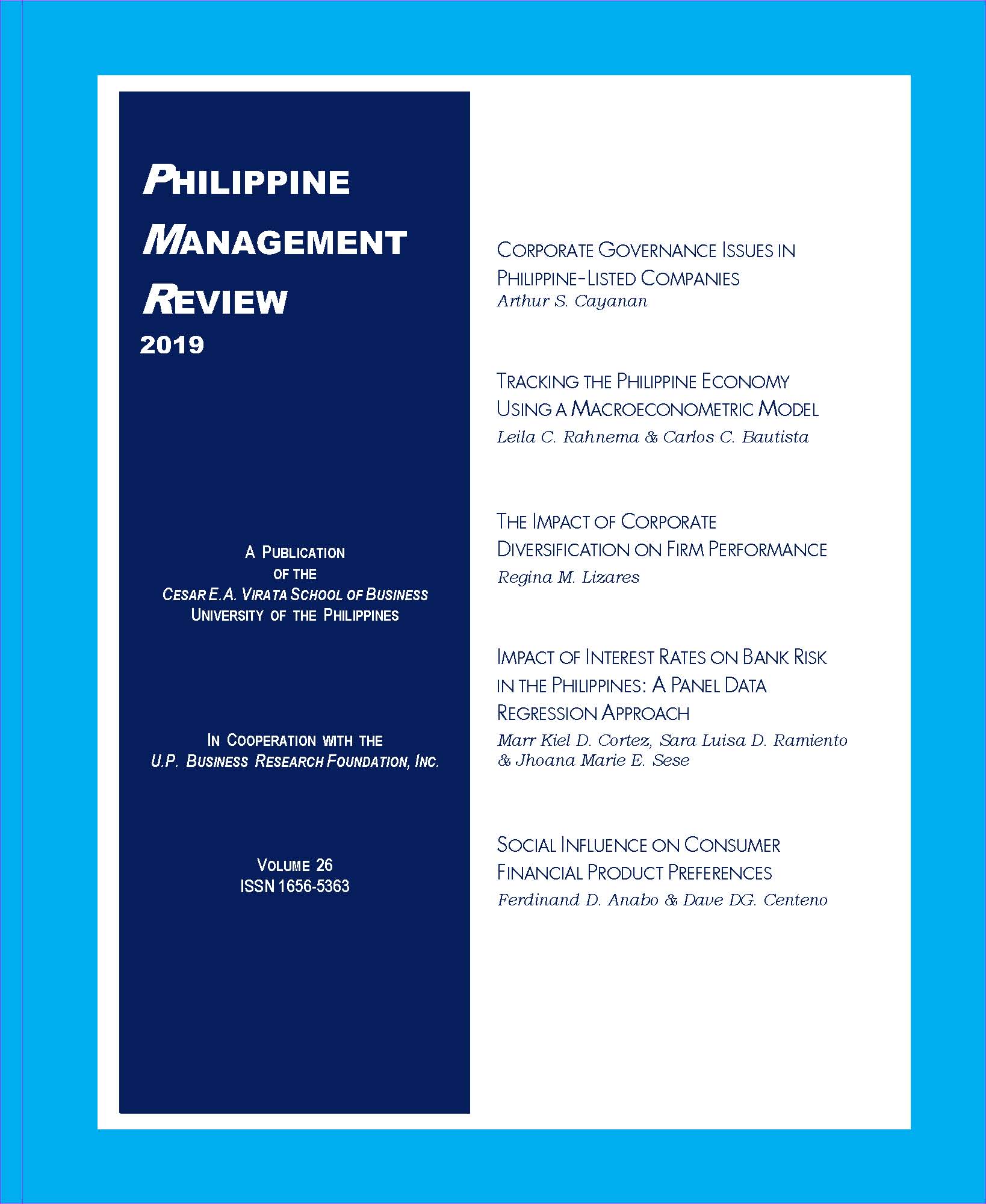Impact of Interest Rates on Bank Risk in the Philippines: A Panel Data Regression Approach
Abstract
This paper seeks to examine the empirical relationship between interest rates and risk-taking activities used by banks in the Philippine setting. Adopting an earlier study conducted in China’s banking risk and policies, the authors use non-performing loan ratio to estimate the bank risk and construct a panel regression model to test the bank risk’s relationship with BSP’s policy rate, bank-level overnight lending facility rate, and reserve requirement ratio. The study uses a quarterly database of balance sheet information containing selected performance indicators of universal bank, commercial bank, thrift bank, rural bank, and cooperative bank groups in the Philippines from 2008 to 2018. The study also analyzes and explains the effects of other alternative factors that could impact bank risks, including bank-specific characteristics and macroeconomic factors. The results show that the central bank’s policy rate and overnight lending facility rate posted negative and statistically significant effects on bank risk, while the reserve requirement ratio posted a negative but insignificant effect on bank risk. The same statistically negative effect is observed on the banks’ total assets, return on assets, and capital adequacy ratio, while the country’s Gross Domestic Product (GDP) posted insignificant effect on bank risk. These results are theoretically interpreted by a model, and serve as a valuable reference for the further study of monetary and financial policies in the Philippines.
JEL classification: E5
